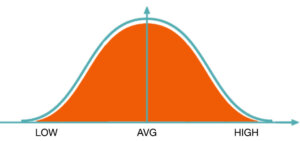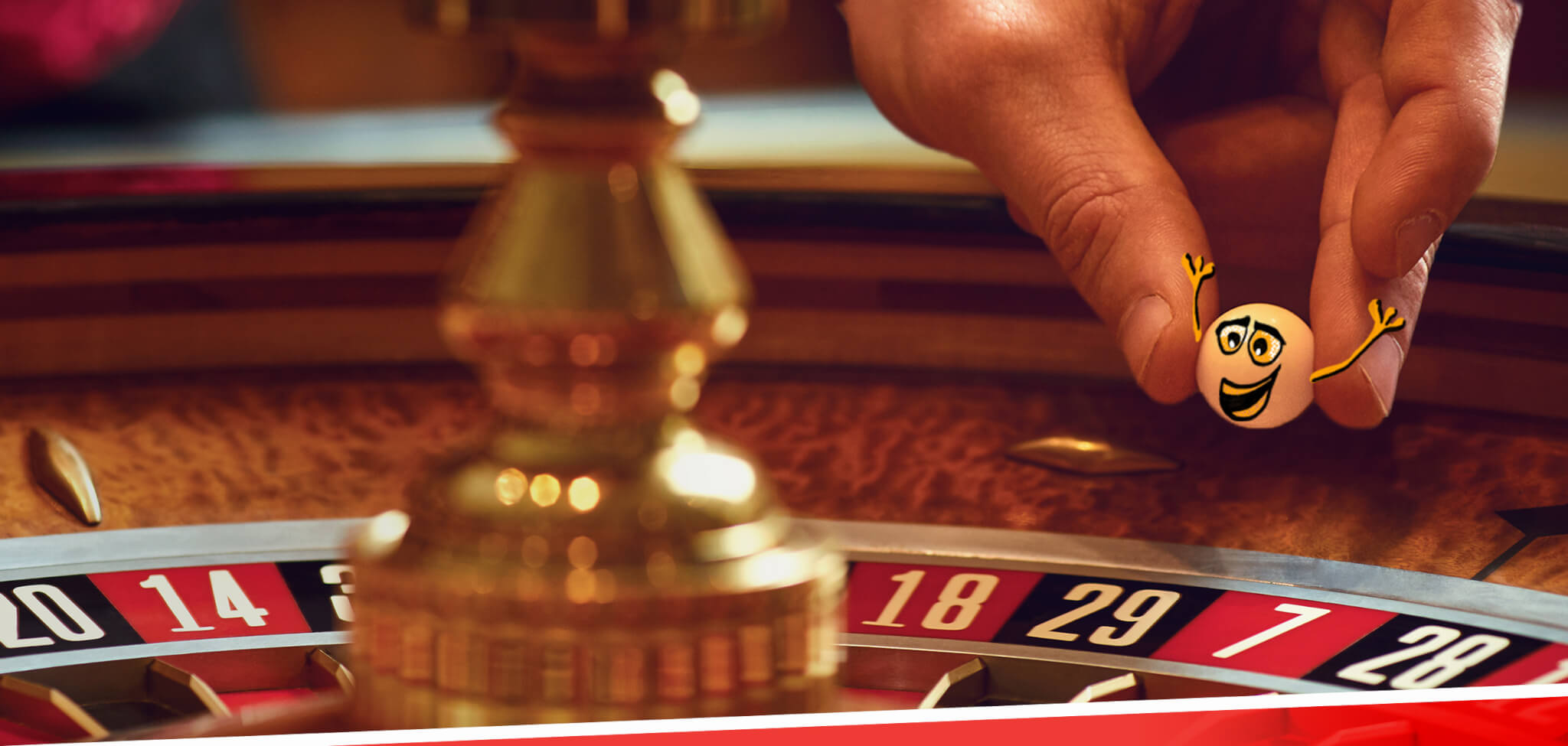Business Outcomes Are Never All-In: You Need to Look at All the Possibilities
“The Sopranos,” arguably one of the best TV shows in history, aired its final episode in 2007. The final episode ends with total ambiguity about what happens to the main character. This episode came out 17 years ago … and I’m still mad about that ending. I want to know what happened to Tony in that cafe!
It’s hard to live without resolution because we, as humans, have been taught that stories, whether they’re TV shows, movies, game shows, sports, books, or whatever entertains you, should be tied up with fancy bows at the end. One person risks it all for the ultimate prize — and they either do that or they don’t.
For example, you don’t “kind of” win the Super Bowl. James Bond doesn’t save the day “a little bit.” Drew Carey doesn’t give “good effort!” prizes on “The Price is Right.” The idea of all or nothing is so ubiquitous and burned into our brains that we expect it everywhere, even in business.
You either make the annual sales goal or you don’t.
Filmmakers use ambiguity to push their audiences out of their comfort zones, and in this article I’m going to do the same thing with you and your business. You’re about to learn that when it comes to business outcomes, victory and failure do not live in a binary “yes or no” world.
Let’s call this class “Learning to Love the Gray Area.”
To start, let me get you thinking on a few questions: If you made 80% of that sales goal, did you really lose? If you sign a dreamboat new client but they require hours and hours of hand-holding, are you sure that’s a win?
Your initial reaction may be yes or no, but the answer is never that black and white. In business, you don’t have clear win/lose situations. You have something far more annoying: probabilities.
Monte Carlo Simulations 101
We’ve already compared running a business to race cars and fiery swords, and this time we’re headed to Las Vegas to talk about the most important idea you’ve never heard of: The Monte Carlo simulation.
In a nutshell, the Monte Carlo simulation is a tool that will help you predict the future. And that’s not wishful thinking; it actually works. Why? Because the future is finite. The possibilities are not endless and neither are the odds or any particular outcome happening. If you calculate the potential outcomes of a situation and the odds of each, you have a clear picture of everything that could happen, from the 100% win to 100% lose and everything in between. That’s a brand-new way to look at your business.
Ready? Make your best bets and cue the gambling analogies.
You Can’t Always Get What You Want
As leaders, we get myopically focused on one idea and one outcome. This can be a huge sales goal, a pending acquisition, or a client that will triple revenue. Whatever it is, you get so excited about the possibilities that you become laser focused on what you want, all the while blocking out the “What Ifs.”
It’s like putting your entire life savings on red and spinning the roulette wheel without a plan to pay the mortgage if it lands on black. You’re feeling lucky, but two things are true: There’s no way of predicting where the ball will stop and there’s nothing you can do about it. The world exists on a wide spectrum of possibilities that range from what you want all the way to not even slightly what you want. And there’s a lot more to the world than “It will happen” or “It won’t.”
Successful business leaders know it’s dangerous territory to focus on a goal without considering what happens if they fail. And while they do focus their time and effort on reaching that goal, they also take time to make contingency plans for other outcomes.
Sounds easy in concept, but in the real world the gray area is just that — ambiguous, fuzzy, and not super comfortable. I work with quite a few business owners who look at me sideways the first time I ask them to think about “What If?”, so let’s use an example to bring this philosophy into practical use. Let’s look at an industry that uses this concept constantly: insurance companies.
Insurance companies set prices for policies based on their assumptions about the odds of a bad thing happening. The price of car insurance, for instance, is related to the odds that the insurer will need to pay out a claim. Payouts could be $1,000 or $1,000,000, so their predictions need to be a combination of likelihood (the odds it will happen) and value (how much it will cost if it does).
Their win condition is “We make more money than we pay out.” Their lose condition is “We pay out more than we take in.” So how do insurance companies predict the odds of various situations?
Another example is AT&T. In the 1950s, being a customer of AT&T was the only way to get a landline connection to your home, but building out phone system infrastructure was extremely expensive and time consuming. The company needed to predict capacity demands years in advance or risk overloading the system when too many calls tried to go through at once. In an era before the internet and cell phones, a landline phone might be the only way for someone to communicate in an emergency. That 911 call has to work, so how did they figure out where to put more resources?
In both cases, they used a Monte Carlo simulation.
How It Works
The Monte Carlo simulation, like many of humanity’s great achievements and leaps, happened basically at random. A Polish physicist named Stanislaw Ulam was stuck in bed sick, and as he played solitaire to pass the time his mind started to wander (and wonder): Could he model out all the probabilities of a game of solitaire? And if he could model every. single. possible. way. a game might go, could he also figure out how likely each step was to exist in any given game?
It turns out the answer is yes. And there are 80 unvigintillion possibilities. (I was today years old when I learned that “unvigintillion” is a word.) And all those possibilities line up nicely on a bell curve, like this one

Some things come up a lot; some barely come up once.
I’m not going to go much deeper down this rabbit hole because the scientific applications are immense but not relevant to business planning. Instead, I want to hammer home the overall concept: In any given scenario, there are a huge number of possible outcomes, with some much more likely than others. There are nearly zero situations in which there are only two possible outcomes.
Read that again, then write it down.
What Does This Mean For Business?
“There are plenty of scenarios with only two outcomes!” you might be thinking. “A customer either buys my product or they don’t. It’s a simple, two-outcome scenario!”
This is what years and years of the movies have taught you about business, but it’s time to toss all that and look at this differently. What if the customer decides to buy twice as much as you expect — or half as much? What if they decline to buy today, but they refer you to a friend who buys 10x more than they were going to buy? What if they decide to buy, but not for 6 more months? What if they decide, instead of buying your product, to offer to buy your company? What if they respond in pig latin and tell you that you have 72 hours to figure out what they want or else they’re going to sue you?
Obviously, the odds of those things happening decrease the deeper you get into the example, but they never never actually get to zero. Which means that this common, simple business situation — a customer buying a product — isn’t even close to a two-outcome situation.
As wise business owners, we ought to consider as many possibilities and their outcomes as reasonably possible and then prepare accordingly.
Putting The Concept Into Practice
Okay, so that was a lot of words. How are you actually going to use this concept to run your business?
Start by breaking the habit of thinking things have only “win” and “lose” conditions. You now know that situations are always more complicated than that.
Then, consider all the likely outcomes of a situation. The goal is to hit the middle of the bell curve — so that’s where you’ll spend most of your efforts — but a little bit of “What If?” around the edges can be fun also.
What If A T. Rex Eats The Competition?
Finally, put prep work into each option according to your assessment of how likely it is to happen. You’ll do the most work on the most likely things, but not totally ignore the edge cases. (More on this below!)
But first, let’s look at some real-world examples.
I’ll start with the time I failed to buy an apartment complex. At the time, it would’ve been my largest real estate transaction ever. My group of investors had been a bit tricky to corral, but after much work we all agreed that the property was worth at least $18 million. We wrote the offer, sent it, and waited. The seller came back and said close, but not enough. When we asked what they considered enough, the response was “a little more.”
And that’s when everything fell apart.
I had worked with my partners for months to get everyone comfortable at $18 million, but I hadn’t prepared either them or myself for other outcomes. As a result, I couldn’t get anybody to agree on how much more to offer. We all knew that $18 million was a low, but not insulting, offer, but we also hadn’t agreed if $19 million or $20 million would be okay.
The deal eventually fell apart with bickering and infighting because we only considered one option: They will say yes or they will say no. We weren’t prepared for the “No, but …”
Here’s another, more positive example: One of my clients was successfully able to negotiate with an employee because they anticipated a variety of outcomes. It started when said client, the CEO of a company, got an email from his most important employee saying, “I want a raise. Let’s talk about it.”
The CEO started to panic. “How much money would they want? What could they afford? Would they quit? How could they be replaced?”
To calm him down, we worked through a Monte Carlo simulation together. We figured out the likely outcomes (employee asks for a lot of money, employee asks for only a little bit of money, employee asks for additional benefits) and the outcomes of those outcomes (they quit, they stay, they stay but they’re unhappy and they start looking for another job, etc.).
And then we figured out the most likely scenarios and how he’d handle each one. By the time the CEO went into the meeting with the employee, he felt confident that no matter what the employee wanted he had a good plan in place for what he would do next.
This made a high-stress conversation into one with much lower stakes. The employee requested a fairly small amount of money, my client gladly gave it to them, and he got to keep all of those Plan Bs on the shelf. In our debriefing after the meeting, he told me how much it had helped that we’d thought through the options rather than just going into the meeting blind and terrified.
So How About For You?
The first step is to lay out all the possible outcomes for your goal: the good, the bad, and the fugly. For example, let’s say your goal is to double your overall sales for the year. That’s a singular achievement, but imagine all the possibilities for reaching it. It’s essential to lay out every possible scenario, including those that are the most likely to get you to that goal, those that aren’t, and what happens if you bust the goal in a big way (either up or down).
You might ask yourself questions like, Which products can you sell more of in order to make that happen? Would a price increase do the trick? Is a brand-new offering worth the financial risk? What happens if the salesperson you hire is a dud?
It’s your job to figure out which pathways are the Most Likely to Succeed. Focus on those, but keep an eye on the others in case they get feisty. The best way to do that is to understand your business inside and out — who your customers are, what has worked in the past, and what the market is saying (and has said in the past) about products like yours.
Since this is an analogy linked to gambling, the best game I can think of for comparison is craps. Your goal is to double your money, but when you step up to the table to roll the dice, you’re faced with endless possibilities. If you stick with the safest bets, you have a better chance of hitting your goal. You might get lucky and hit snake eyes for a 30-to-1 payout, but the chances of rolling a 2 are 1 in 36.
Smart gamblers stay focused on the goal — winning — and focused on the bets that have the most likely chance of making that happen.
(They also have a backup plan for dinner in case their best strategy fails, they crap out anyway, and lose the money they were going to spend on that fancy steakhouse.)
Why The Monte Carlo Simulation Can Help You Make Good Decisions
Treat your business decisions like a smart gambler. What’s your goal, what’s your best bet for reaching it, and what are the other potential outcomes?
Back to our sales scenario. If you’ve done your homework, and past trends show that your best bet is to create a marketing campaign that hypes up your best-selling product, then that’s where you should place the most effort and planning. Use that goal to determine your budgets, sales incentives, and operations.
It would be really cool if you could triple your product sales from last year, but you know the odds of that happening are very unlikely. You shouldn’t plan around that goal, but you should understand that it’s possible and have a plan in place just in case your Stanley mug ends up in a viral TikTok video and is suddenly being sold on eBay for hundreds of dollars over retail.
You can also be relatively sure that your best-selling product won’t become your worst-selling, but that scenario is also a possibility. (Bad salespeople and PR nightmares are a rare thing, but still a thing.) Spend a little bit of time making sure that your Plan B can still get you across the finish line for the year’s overall sales goals.
All this planning might even lead you to the conclusion that the sales goal you set is all the way to one side or the other on that bell curve, and you’re more likely to achieve success if you alter that number to something more in the middle.
Outliers: The Black Swan Fallacy
Have you ever seen a black swan in person? The odds are your answer is no, but that doesn’t mean they don’t exist. When people assume things they haven’t witnessed themselves aren’t real, it creates a fallacy that could end in trouble when they realize that the thing does, in fact, exist. Surprise!
In business, you can think of a black swan event as something that’s highly unlikely, but happens every once in a while. It’s the stuff at the far ends of that bell curve. In all your experience you’ve never seen anything like that happen, but that doesn’t mean it can’t.
In fact, the odds of that happening to some company, somewhere, are pretty good. This is why you have to examine all the possibilities — even if it’s only a million-in-one chance, it’s still a chance.
In financial circles, the term “black swan event” has come to denote something unforeseen that’s highly bad — a stock market crash, for example. But in our case, it can be a scenario where the salesperson sells either seven new products or seven million. Both are unlikely and unpredictable, but not impossible. What are you going to do if either one of those happens?
Success Is Relative
You’ve determined your goal and are well on the way to achieving it when you hear the flapping of giant wings. A customer had a terrible experience with your beloved product and put you on blast all over the internet, just in time to tank the EOY report. You still made enough sales to match last year but you didn’t double that number, because black swans are mean AF.
At this point in the game, smart leaders understand two things: One, “not succeeding” does not equal “failing.” Did you get exactly what you wanted? Not even close. But did you fail? Also no. Like many business situations, you landed somewhere on the spectrum of outcomes.
The other thing you understand is because you used the Monte Carlo simulation, you knew that this was a possibility — if only a small one — so it wasn’t a complete shock. You may even have prepared for this scenario just in case, because even the most careful and rule-following gamblers are powerless against Lady Luck.





Could he model out all the probabilities of a game of solitaire? And if he could model every. single. possible. way. a game might go, could he also figure out how likely each step was to exist in any given game?